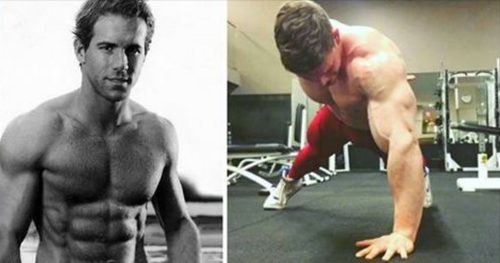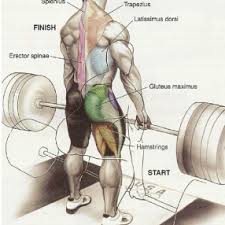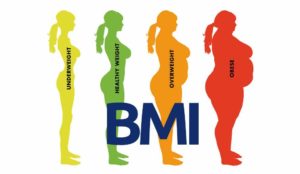As you already probably know, testosterone is one of the most important muscle building hormones produced in the body. Most of the testosterone in the blood is bound to a protein called sex hormone binding globulin (SHBG). The amount of testosterone that is not bound (“free” testosterone) can be actually used by the body for muscle building.
1. How to naturally raise your testosterone levels
Add compound exercises which engage multiple muscle groups in your workout regimen. The best choices are deadlifts, squats, bench press and overhead presses. Research has shown that utilizing these exercises plays a big role in raising testosterone levels. The biggest increase in testosterone levels in relation to training happens when using relatively heavier weights and a lower rep range of 1-6 reps.
Several studies have shown that the best weight to pick is 85% of your 1-rep-max. Also, you should consider buying a testosterone boosting supplement. The best choice is Tribulus Terrestris, which is a natural supplement and has been shown in several studies to possess the ability to raise LH (Luteinizing hormone) levels. One of the key functions of this hormone is to stimulate the production of testosterone in the testes.
2. How to prevent a decrease in testosterone levels?
2.1. Obesity. Based on the way in which testosterone and estrogen work together in the body, increased estrogen levels lead to decreased levels of testosterone circulating in your body.
Having excess fat triggers a greater production of estrogen because fat cells are the main manufacturers of estrogen. This means that the more fat tissue you have, the more estrogen you’ll have in your blood and less testosterone.
2.2. Alcohol and drug abuse. Alcohol can inhibit the ability to remove excess estrogen from your bloodstream by acting as a CNS (Central Nervous System) depressant, as well as by reducing zinc levels.
2.3. Stress. Increased stress raises the levels of corticosteroids in your bloodstream, causing testosterone levels to decrease.
2.4. Using various medications. Some meds, like estrogen and progesterone, reduce LH levels. LH, as we said, is the hormone in charge of production of steroid hormones, like testosterone.
2.5. Diabetes. Research suggests that there’s a relation between type 2 diabetes and decreased testosterone levels.
2.6. High cholesterol levels and hypertension. Both of these cause your arteries to harden, which reduces blood flow the organs in charge of releasing sex hormones. This logically leads to decreased sex hormone levels.
2.7. Aging. It’s been proven that after turning 40 testosterone levels decrease by approximately 1% per year. There’s not much we can do about that. Time doesn’t stop for anyone. But, we can try to tweak our test levels in any way we come up with.
2.8. A low-fat diet. A reduced consumption of fat increases the SHGB (Sex hormone-binding globulin), which leads to a decreased amount of free testosterone. It’s been shown that monounsaturated fats have a very big role in increasing test levels and bioavailability.
2.9. Overtraining also contributes to up to 40% decrease in test levels.
This is why it’s very important to notice the symptoms of overtraining early on and give your body one to two weeks of much-needed rest.
2.10. Lack of sleep. If you’re not getting at least 8 hours of sleep every night, your body will not recover well, which leads to decreased testosterone and increased corticosteroid levels. Corticosteroids actually have the same effect as cortisol in that they are catabolic hormones, which means that they utilize your hard-earned muscle tissue to feed the brain and your heart with energy.
2.11. Vitamin C. This vitamin inhibits the production of the stress hormone cortisol. Cortisol reduces test levels. So, less cortisol means more testosterone.
3. Block SHBG’s testosterone-binding effects.
Nettle root which is a very highly concentrated extract has been shown to be quite effective at binding to SHBG, thus allowing more free testosterone to be in circulation. It’s also known to act as a 5-alpha reductase inhibitor. That’s the enzyme in charge of converting testosterone to dihydrotestosterone, which is a more potent form of testosterone, causing enlargement of the prostate and in the end, prostate cancer. The methanolic extract of nettle root also has the potential to drastically reduce SHBG levels, thus increasing free testosterone levels in your bloodstream.
Pygeum is also another potent herb, known for inhibiting SHBG’s testosterone-binding effects. Pygeum and nettle root extracts have a positive impact on the prostate gland in that it serves as a prevention against benign prostatic hyperplasia, by blocking the enzyme 5-alpha reductase. Avena sativa is another extract from the straw of oats. This extract has slightly different properties. It helps you free the bound testosterone molecules, increasing the amount of circulating free testosterone.
4. Reducing aromatase levels
The mineral zinc is known to inhibit the aromatization process by which testosterone is converted into estrogen. The generally recommended dose for inhibiting the aromatase enzyme behind this process if around 80mg a day. But, you need to ensure that the combined amount of zinc from all the daily supplements you consume does not exceed this dose.
Another natural inhibitor of aromatase is chrysin. Chrysin is a bioflavonoid which is not absorbed in your system optimally. However, it’s been found that when consumed with piperine, it has a lot better absorption. Supplementing with these two compounds together may have a positive effect on decreasing aromatase levels.
How can we apply the advice above to natural bodybuilding?
We already assume you’re someone who trains regularly and doesn’t want to take exogenous anabolic steroids. This puts you in the category of natural bodybuilders or fitness enthusiasts who want to keep their natural test levels in a healthy range, prioritize good overall health and quality muscle gain. If you want to achieve all of this, here’s what you need to do:
1. If you carry even a slight amount of excess fat you should consider starting a diet immediately accompanied by a training regimen, suited for fat loss and maintaining muscle mass.
2. You should also consider reducing your alcohol consumption to the absolute minimum if you plan on keeping your test levels high.
3. Start practicing some form of self-control techniques, like meditation. These will help you reduce your stress levels.
4. Take the medications that are absolutely essential for your health and your doctor prescribed. Discuss with your physician to find out about possible natural alternatives to the medications you’re taking and if he would recommend taking them for a specific health issue.
5. Always keep your serum cholesterol and blood pressure in check.
6. Consume enough healthy fats. Healthy means monounsaturated and omega-6 and omega-3 polyunsaturated fats.
7. Look for signs of overtraining and rest properly. Sleep at least 8 hours per night for an optimal recovery. Symptoms of overtraining are overall irritability and tiredness, loss of appetite, lack of motivation, lack of mental focus, prolonged periods of recovery etc.
8. Base your training routine on basic compound movements. Train using a low number of reps. 5-8 reps mean you’re in the range that promotes increased testosterone levels.
9. Try adding these natural supplements in your diet and experience the full benefits of having high test levels: piperine-chrysin mix, nettle root and pygeum extract, Avena Sativa extract and Tribulus terestris. You can look for them in your local health food store. Take the recommended dosages.
10. Also, you shouldn’t consider working out without taking enough vitamin C, which is at least one gram per day and zinc, about 15 mg a day. Take vitamin C along with your multi-vitamin drink after you’ve had breakfast and immediately after training with your whey protein shake. Your multi-vitamin brand should contain zinc, but generally, that’s not enough. Take zinc along with magnesium. You can do this by taking ZMA right before going to bed on an empty stomach.





Post your comment